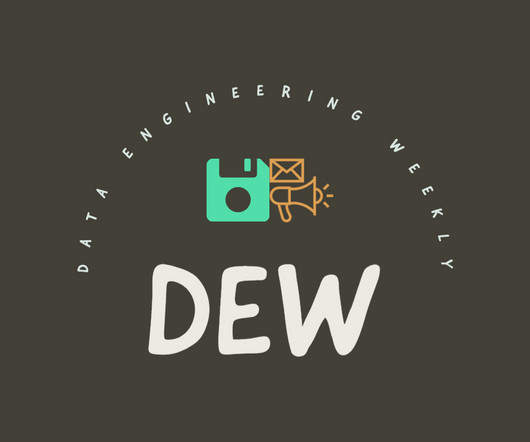Data Engineering Weekly #137
Data Engineering Weekly
JULY 2, 2023
Editors Note: 🔥 DEW is thrilled to announce a developer-centric Data Eng & AI conference in the tech hub of Bengaluru, India, on October 12th! LinkedIn write about Hoptimator for auto generated Flink pipeline with multiple stages of systems. Can't we use the vector feature in the existing databases?












Let's personalize your content